
伤口世界
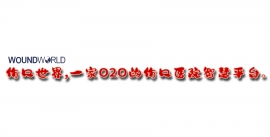
- 星期三, 31 7月 2024
Split-thickness skin graft and intralesional epidermal growth factor for patients with diabetic foot wounds
Bulent M Ertugrul, Saime Irkoren, Ender Ceylan and Oner Savk
Citation: Ertugrul BM, Irkoren S, Ceylan E, Savk O (2024) Split thickness skin graft and intralesional epidermal growth factor for patients with diabetic foot wounds. The Diabetic Foot Journal 27(1): 34–9
Key words
- Diabetic foot
- Epidermal growth factor
- Skin graft
- Wound treatment
Article points
1. Healthy granulation tissue is essential to the success of split-thickness skin grafting
2. Epidermal growth factor (EGF) has a critical role in the angiogenesis and formation of healthy granulation tissue
3. Patients with diabetic foot ulcers treated with EGF had a higher rate of graft survival.
Authors
Bulent M Ertugrul MD is Professor of Infectious Diseases and Clinical Microbiology, University of Adnan Menderes School of Medicine, Aydin, Turkey; Saime Irkoren MD is Associate Professor of Plastic, Reconstructive and Esthetic Surgery, University of Adnan Menderes School of Medicine, Aydin, Turkey; Ender Ceylan MD is Assistant Professor of Plastic, Reconstructive and Esthetic Surgery, University of Adnan Menderes School of Medicine, Aydin, Turkey; Oner Savk MD is Professor of Orthopedics and Traumatology, University of Adnan Menderes School of Medicine, Aydin, Turkey
Split thickness skin grafting (STSG) is a simple surgical technique in wound reconstruction, but various factors including inadequate wound bed preparation may cause partial or total graft loss. Ensuring infection-free healthy granulation tissue is essential before operation. Epidermal growth factor (EGF) has a critical role in angiogenesis and formation of healthy granulation tissue. This study retrospectively investigated the value of intralesional EGF in patients with a chronic foot ulcer due to diabetes who underwent reconstruction with an autologous skin graft. Patients treated with intralesional EGF had a higher rate of graft survival, significantly fewer postoperative complications and reduced hospitalisation times. These results suggest we should undertake a need prospective study of this issue with a larger case series.
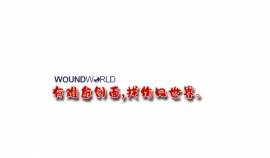
- 星期二, 30 7月 2024
Challenges and opportunities in reducing risk of diabetes-related cardiovascular disease: Making Every Contact Count
Michelle Clapham
Despite recent Government initiatives to reduce rates, the prevalence of type 2 diabetes is expected to continue rising to almost 10% of the population by 2035. Complications of type 2 diabetes, such as cardiovascular disease (CVD), contribute to approximately 22 000 deaths annually in England, indicating a need for population health management through preventative healthcare. The Making Every Contact Count (MECC) initiative recommends the building of preventative strategies into routine primary care appointments to reduce modifiable risk factors associated with both type 2 diabetes and CVD. This article explores the unique opportunities general practice nurses have to promote primary and secondary prevention of CVD.
Citation: Clapham M (2024) Challenges and opportunities in reducing risk of diabetes-related cardiovascular disease: Making Every Contact Count . Diabetes & Primary Care 26: [Early view publication]
Key words
– Cardiovascular disease
– Making Every Contact Count
– Service delivery
– Type 2 diabetes prevention
Author
Michelle Clapham, Lecturer in Adult Nursing, University of Plymouth.
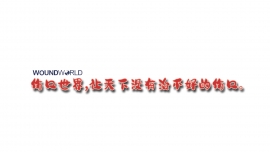
- 星期一, 29 7月 2024
Case report: LADA – assessing diabetes in a non-overweight younger person
James Morris, David Morris
Latent autoimmune diabetes in adults (LADA) is a slowly progressing form of autoimmune diabetes with antibodies directed against the pancreatic beta-cells. It typically presents in people over the age of 30 years and has a clinical and biochemical picture intermediate between type 1 and type 2 diabetes. Because there is no immediate requirement for insulin, it is often initially misdiagnosed as type 2 diabetes. This case report of a younger adult with an uncertain diagnosis of type 2 diabetes illustrates the characteristics and clinical implications of LADA, its differential diagnosis and its possible management strategies.
Authors
James Morris, GPST3, Priory
View Medical Centre, Leeds, and GPST Visiting Lecturer, University of Leeds; David Morris, Retired GP and Specialist Doctor in Diabetes, Undergraduate Clinical Tutor, Keele University.
Citation: Morris J, Morris D (2024) Case report: LADA – assessing diabetes in a non-overweight younger person. Diabetes & Primary Care 26: [Early view publication]
Case presentation
Susan, a 39-year-old lady with a two-year history of type 2 diabetes, attended general practice reporting symptoms of thirst, increased micturition, lethargy and abdominal discomfort. She reported a weight loss of 2 kg over the last year.
Initial management of Susan’s diabetes had focused on lifestyle adjustment and treatment with metformin, which had been titrated up to a dose of 1000 mg twice daily. While this strategy initially improved glycaemic control, Susan’s HbA1c levels continued to fluctuate, running as high as 75 mmol/mol, despite careful diet, regular exercise and taking her medication as prescribed. As a result, sitagliptin (subsequently stopped because of pruritus) and more recently empagliflozin were added to Susan’s regimen.
Susan, a car driver, had declined gliclazide, wishing to avoid the risk of hypoglycaemia. Susan was up to date with her diabetes foot checks and retinal screening, and there were no diabetes complications.
Latest results (2 months previously):
HbA1c 63 mmol/mol (7.9%); total cholesterol 4.7 mmol/L; non-HDL cholesterol 3.8 mmol/L; Hb 135 g/L; eGFR >90 mL/min/1.73 m2 ; urinary ACR <3 mg/mmol.
Past medical history: Gestational diabetes.
Medication: Metformin 1000 mg twice daily; empagliflozin 25 mg once daily.
Social history: Secretary; ex-smoker; alcohol only
Family history: Mother and first cousin with type 1 diabetes.
Examination: BMI 24.1 kg/m2 ; blood pressure 125/72 mmHg. Cardiovascular and respiratory systems unremarkable. Abdomen: no significant
Investigations: Dipstick urine: glucose +++, nil else. Fingerprick glucose: 12.3 mmol/L. Blood ketones: not significant.
What is your clinical assessment of the situation?
What further investigations would you consider?
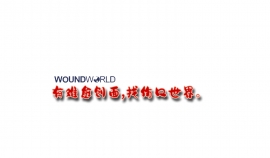
- 星期五, 26 7月 2024
Lipid management – Part 2: Use of statins
Claire Davies
Questions by:
Pam Brown, GP, Swansea
Jane Diggle, Specialist Diabetes Nurse
Practitioner, West Yorkshire
Citation: Davies C (2024) Q&A: Lipid management – Part 2: Use of statins. Diabetes & Primary Care 26: 91–5
Author
Claire Davies, Diabetes and Endocrinology Specialist Pharmacist, Gateshead Health NHS Foundation Trust.
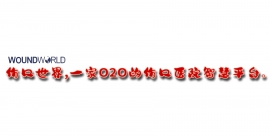
- 星期四, 25 7月 2024
Lipid management – Part 1: Measuring lipids and lipid targets
Claire Davies, Patrick Wainwright
Questions by:
Pam Brown, GP, Swansea
Jane Diggle, Specialist Diabetes Nurse Practitioner, West Yorkshire
Citation: Davies C, Wainwright P (2024) Q&A: Lipid management – Part 1: Measuring lipids and lipid targets. Diabetes & Primary Care 26: 85–9
Acknowledgement
This Q&A was originally authored by Patrick Wainwright in 2022. Claire Davies has revised the answers in response to updated NICE recommendations published in December 2023.
Authors
Claire Davies Endocrinology Specialist , Diabetes and Pharmacist, Gateshead Health NHS Foundation Trust; Patrick Wainwright, Consultant in Chemical Pathology and Metabolic Medicine, Betsi Cadwaladr UHB, North Wales.
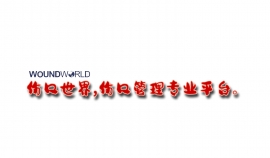
- 星期二, 23 7月 2024
Understanding personality traits: could this help us support better foot self-care behaviours in people with diabetes?
Andrew Hill
Diabetes mellitus continues to be a challenging health problem and affects well over half a billion people globally (International Diabetes Federation [IDF], 2022). The complications of diabetes are multi-factorial and serious with an estimated 48% of all diabetes-related deaths occurring before the age of 70 (World Health Organization [WHO], 2024). One of the greatest predictors of diabetes-related death is diabetic foot ulceration (DFU) and subsequent amputation (Jeyaraman et al, 2019). It is widely believed that with appropriate disease management and effective self-care behaviours, many complications of diabetes, including DFUs, may be entirely avoided (National Institute for Clinical Excellent [NICE], 2020). Furthermore, the International Working Group on the Diabetic Foot (IWGDF) in their 2023 update to guidelines cite good foot self-care behaviours as a key approach to prevention of DFUs (Bus et al, 2024). However, good self-care behaviours in diabetes — particularly around foot self-care — are often not consistently undertaken by people with diabetes and the reasons for this are many and their interplay quite complex (Matricianni and Jones, 2015). Adherence to care more broadly is a multidimensional phenomenon, determined by the interplay of social and economic, patient-related, health-systemrelated and condition-related factors (Kardas et al, 2013). This complexity appears to surround patient motivation, lived experiences, knowledge, access to health services and interpersonal relationships between patients and the healthcare professionals engaged in their care (Hill et al, 2022). This interplay may mean that ‘one size fits all’, standardised approaches to patient advice and education are not the most effective way to improve patient self-care behaviour in diabetes. This links with the work done by Engel (1977) who presented his biopsychosocial model of health. This model posits that health and illness are the product of biological, psychological and social influences with the latter two components being absent from the more traditional biomedical model. Indeed, by providing a more explicit focus on the psychological and social influences on health, this has resulted in the development of greater understanding of the behaviours of individuals in the context of their health.
Citation: Hill A (2024) Understanding personality traits: could this help us support better foot self-care behaviours in people with diabetes? The Diabetic Foot Journal 27(1): 14–9
Key words
- Psychological influence on health
- Self care
- Social influence on health
Article points
1. Good self-care behaviours in diabetes — particularly around foot self-care — are often not consistently undertaken by people with diabetes
2. ‘One size fits all’, standardised approaches to patient advice and education are not the most effective way to improve patient self-care behaviour in diabetes
3. By providing a more explicit focus on the psychological and social influences on health, this has resulted in the development of greater understanding of the behaviours of individuals in the context of their health.
Authors
Andrew Hill is Senior Lecturer & Programme Lead – BSc (Hons) Podiatry, The SMAE Institute, Maidenhead, UK
